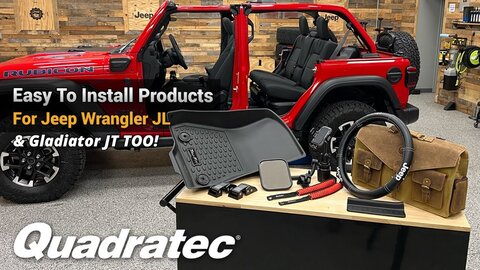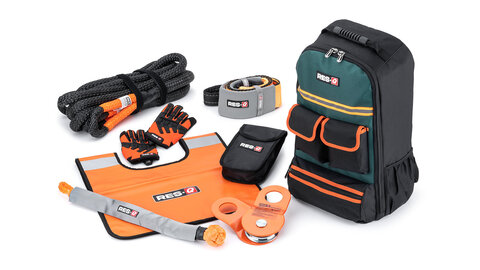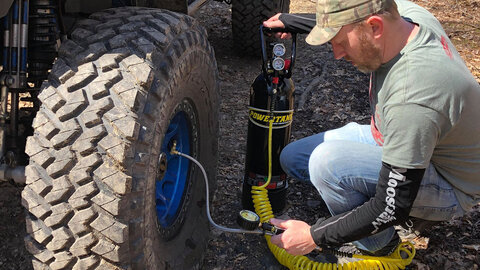Imagine a late fall Saturday night, the chilly October rain splashing into your face as you frantically unlock your Jeep and dive inside.
You wipe water from your face, adjust the rear view mirror and toss your cell phone into the passenger seat.
As your Grand Cherokee roars to life, you buckle up and shift into gear for the short ride home.
Turning on the main road, you are deep in thought when headlights suddenly spray across your face.
Someone is swerving toward you from the other direction!
You quickly check the right shoulder. Nothing there. So you smoothly veer over and out of the way.
The other vehicle roars past.
Luckily you didn’t panic - having both experience and confidence to respond.
But now imagine this situation with your teen driver at the wheel. Would they handle it the same?
Hopefully.
The truth, though, is many of us may not know. And as jeepers we all need to understand these vehicles we have grown to love can also be a danger to the ones we love as our teens enter driving age.
This week, October 18-24, has been designated National Teen Driver Safety Week by the National Highway Traffic Safety Administration.
It is the perfect time to pull up a chair and review how and what we should teach our teen drivers, as well understanding the potential distractions they may encounter.
Founded in 2007, following a series of fatal crashes in Pennsylvania involving high school students, the National Teen Driver Safety Week aims to create awareness of many risk factors involved with teenage driving.
According to The Center for Injury Research and Prevention at Children’s Hospital of Philadelphia (CHOP), a supporting organization of Teen Driver Safety Week, the first six months after getting a license is the most dangerous time for any new driver.
As parents, we often try hard to combat this danger by teaching our teens the basics of driving like steering, parking, and controlling the vehicle – usually in an empty school or mall parking lot. We also tend to hammer them about road rules and situations.
However, NHTSA statistics show almost 75 percent of accidents involving teen drivers are the result of issues beyond basic driving skills or rules. Errors such as underestimating vehicle capability, poor road hazard scanning, improper speed for conditions, or driving while distracted.
These studies also indicate, while we work hard to teach the basics of driving, less than 25 percent of us actually take the time to reinforce these higher-order driving skills to our teen driver.
For Jeep owners, this is particularly troubling as other factors with our specialty vehicles like ride height, weight, cornering, braking ability, visibility and rollover risk can easily contribute to a potential accident for new drivers.
So it is imperative, beyond simple driving practice, to reinforce how a Jeep’s height makes for better forward road vision, but this higher center of gravity also means a Jeep does not hug the road well and could roll over with sudden movements or quick cornering.
Work with your teen on the importance of smooth turns and lane changes in all conditions. Demonstrate that these larger vehicles can also cause visibility issues on the side or rear. Backup cameras on newer vehicles help, but are not a substitute for careful rearward movement or lane changes.
Let your teen know to keep a safe distance between all other vehicles. This is always important no matter what you drive, but the added weight of a Jeep and its accessories certainly does add to braking distance.
Give plenty of practice time for your teen to drive on progressively harder roads - from quiet streets to a busy highway. In decent weather, as well as rain or snow.
Have them realize that four-wheel drive is definitely a safety feature in certain weather conditions, but is never a replacement for safe driving.
Ask them explain to you, while driving, if they feel they are giving the proper distance or are traveling at the safest speed for conditions.
Make them drive unfamiliar roads to sharpen recognition of potential road hazards. Hazard perception is a particular problem for teens as they have not developed the ability to ‘scan ahead’ to detect potential problems.
And stress the importance of common sense as much as everything else. This includes things like seat belt use at all times, no cell phones, no food or drink, and emotional control at the wheel. Of course, this also means no alcohol while driving. Ever.
Plus, make sure they only practice driving with you and no other passengers or loud music. Research from CHOP shows other teens in the car and loud music are the top two distractions for teen drivers.
As you do the above, remember that focused driving practice can be as stressful for your teen as for you.
While there may be plenty of ‘white knuckle’ riding ahead, try to refrain from arguing while driving or being too critical.
Ask open-ended questions to your teen, in a normal tone, about their driving. Process answers without judgment and respond how their driving made you feel.
For example, if they had to swerve to avoid a braking or stopped car then ask them how they think it was handled. Respond with something like “when you don’t pay total attention to the road, it worries me. I get concerned this may become a habit.”
A 2012 study by the University of Iowa linked a 21% drop in risky teen driving behavior when teens were calmly engaged this way, compared with a control group.
Finally, realize teens have a lot to learn when they begin the driving process. Even after several months of supervised practice, over 54% of them still make mistakes while driving such as hitting a curb, running a stop sign or pulling out in front of oncoming traffic.
So take your time with them and do not let them rush you into unsupervised driving even after they receive their license, if you are not comfortable. Talk with your teen and come to an agreement.
Research shows that with consistent, cool and calm interaction about all types of driving situations, as well as attentive and structured practice, their mistakes will drop off dramatically after the first few months.
This way, when you imagine whether your teen has the ability and confidence to respond if those headlights are coming at them, you will know the answer.
Yes. Yes indeed.
Learn How to Modify, Repair, and Enjoy your Jeep Vehicle from the Experts at Quadratec
Teen Driver Safety Week: Smarter Teen Driving starts with Parents

Comments
Top Jeep Articles
- November 7, 2024
- 4 min read
While not a selling event, Friday's SEMA Enthusiast Experience is a great way to see new products and interact with thousands of exhibitors.
- November 6, 2024
- 5 min read
Top three things from our first day at the SEMA Show.
- November 5, 2024
- 5 min read
Just because you may not be able to attend the annual SEMA show doesn't mean what happens there isn't important to you (and your Jeep).
- October 31, 2024
- 4 min read
From education, to product knowledge, to rights lobbying, SEMA is ingrained throughout the automotive world.
- October 30, 2024
- 5 min read
Often overshadowed by other recovery things like winches and recovery boards, a Jeep Recovery kit can be just as important should a recovery situation arise.
- October 28, 2024
- 6 min read
You don't need to head to the garage to do something with your Jeep. You can just get in, drive, and find something great to enjoy.
- October 22, 2024
- 6 min read
Keeping the correct tire pressure not only extends the life of those tires, but it also increases your Jeep's fuel economy.




















